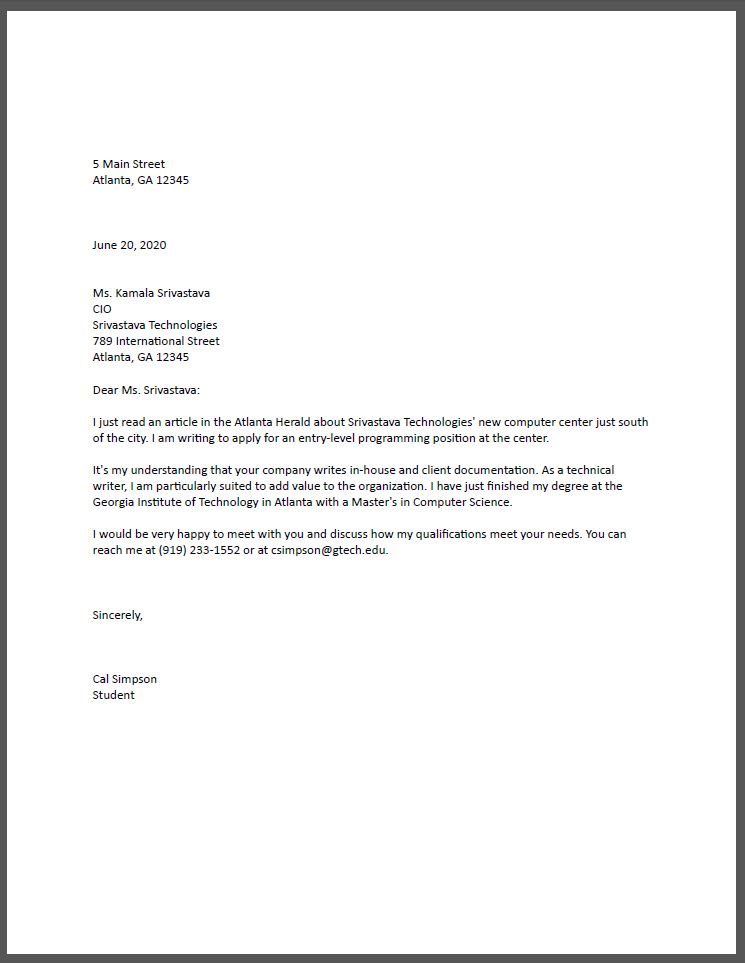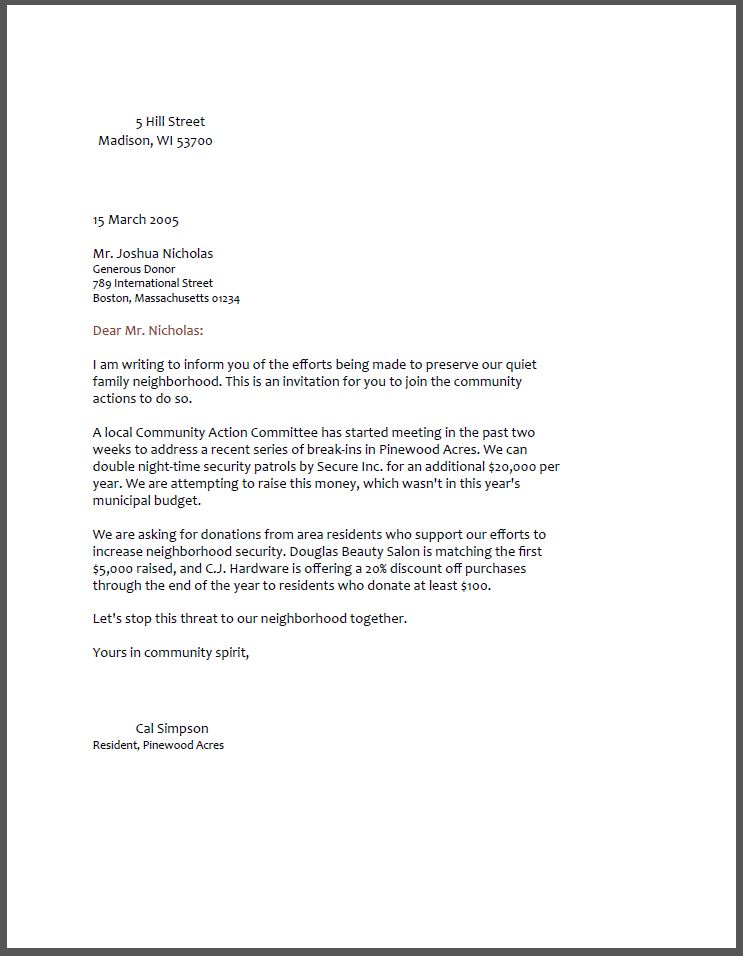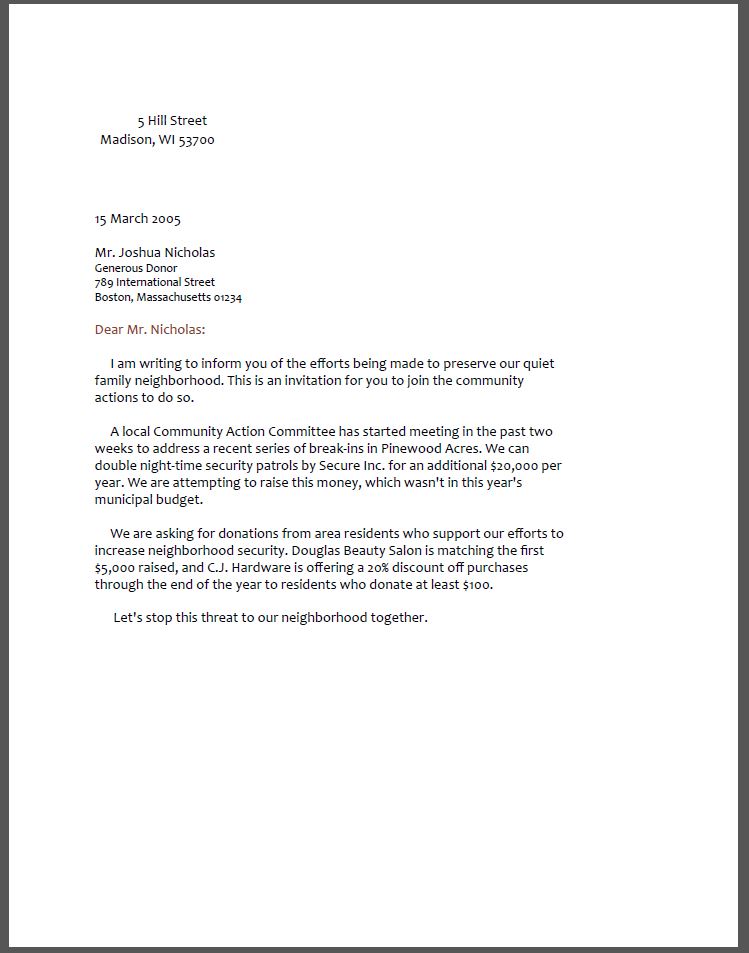A business letter is a formal missive that expresses who you are on a professional level. It might be sent to many companies or to one or more colleagues in a single company. It’s true that email is the main form of communication in the digital age. However, printed business letters are reserved for our most formal correspondence, so it benefits you to know how to write one.
Purpose of a Business Letter
There’s a wide variety of reasons people write business letters. The major objectives of business letters include the following:
- To exchange information related to business
- To establish a relationship for new business associates
- To make an inquiry about people, products, processes or prices
- To place orders for goods and terms of payment
- To keep a permanent record of information
Examples of business letters include employment verification, reference letters, job offers and letters of recommendation for college and job applications.
There are established rules for layout and language that are easy to follow with a little practice. Try to present a letter that is free of typos and grammar errors to make the best impression. After you have finished your last draft, read the letter over at least twice, once out loud. It’s a great idea to have a trusted colleague proofread it to make sure you didn’t miss any minor errors.
Sections of a Business Letter
There are different styles for business letters that we discuss below. However, all business letters share the same main sections, each of which has a set format to follow.
- Sender’s contact information
- Recipient’s contact information
- Salutation or greeting
- Body
- Closing
- Sender’s signature
Each of these sections is broken down for you below.
Sender's Contact Information
Include the following, each on a separate line, in the sender’s contact information:
- Sender’s Name
- Sender’s Job Title
- Sender’s Company
- Sender’s Address
- Sender’s City, State ZIP Code
- Sender’s Phone Number
- Sender’s Email Address
Note: For privacy, the phone number is sometimes omitted.
Date
Write out the full date. For example:
- March 5, 2019
- February 3, 2020
Sometimes, the date is centered at the top of the page. More usually, it’s placed between the sender’s contact information and the recipient’s contact information, with a blank line before and after the date.
Recipient's Contact Information
This section follows the sender’s contact information and the date and includes similar information, including
- Recipient’s Name
- Recipient’s Title
- Recipient’s Company
- Recipient’s Company’s Address
- Recipient’s City, State ZIP Code
Salutation
The salutation should reflect the nature of your relationship with the sender while also remaining respectful and formal.
For formal letters where the recipient is not known, try “To Whom It May Concern”
Use a title and full name if you have it available — “Dear President, Dr., Ms., Mr., or Mrs. (Last Name),”
- Dear Mr. Jones
- Dear President Obama
- Dear Mrs. Vargas
- Dear Ms. Hahn
For personal acquaintances, it’s acceptable to just use the first name — “Dear (First Name),”
The Body
Single-spaced lines should be used, but leave an extra line after each paragraph on block formatted business letters. No extra space is needed for indented paragraph-style business letters. There’s also an extra line between the salutation and the first paragraph and between the last paragraph and the closing. Left justify your letter.
Use the Appropriate Tone
Above all, clarity is key. State your purpose in straightforward language in the first paragraph, which should be concise. For example, you can start out with “The reason I am writing to you…” or “This letter is in reference to…” and then get into the topic right away.
- “I am writing to you to provide a reference for Joseph Polanski for the position of junior accountant at your firm.”
- “This letter is in reference to the annual stockholders’ meeting…”
The main body of the letter should provide all the information your reader needs to understand the objective and respond appropriately. Avoid long, wordy sentences or extraneous information that doesn’t get to the heart of the matter. Be brief.
The Art of Persuasion
There’s less at stake in a letter that merely conveys information. However, if you are asking the reader to do something, persuasion is important. You may wish the reader to invest money, hire you, fix an issue or join a cause.
Let’s say you want the reader to sponsor a scholarship at the local community college. You might point out how investing in the business leaders/teachers/scientists of tomorrow ultimately benefits the company and conforms to its other philanthropic endeavors. Any common ground or persuasive arguments you add increase your likelihood of success.
Finishing up
The length of the body varies according to your needs. However, remember that the shorter the letter, the more likely the reader is to read the entire thing. Generally, shoot for two main body paragraphs between the opening and closing paragraphs.
The closing paragraph only needs two sentences. Reiterate the reason you are writing and thank the reader for their time and consideration.
Close
This can be customized in certain ways. Just remember to keep it professional and formal in nature, such as:
- Respectfully or Respectfully yours,
- Sincerely or Sincerely yours,
- Cordially or Cordially yours,
Less formal options include:
- All the best,
- Best, or Best regards,
- Thank you, or Thanks,
- Warmest regards,
The Signature
A handwritten or electronic signature goes in the four lines following the close. Type your full name after the signature spaces.
Some senders prefer to include their contact information at the bottom of the page after the signature. That’s an acceptable variation of included it at the top of the page.
Close,
Your handwritten signature (4 spaces)
Typed full name
Title
Examples of Business Letter Styles
There are two primary styles of business letters, block and indented. A common variation is indenting the close and signature, which is also demonstrated below.
Block Style

Indented Style

Indented Close and Signature Variant

Craft your perfect resume in minutes
Get 2x more interviews with Resume Builder. Access Pro Plan features for a limited time!

